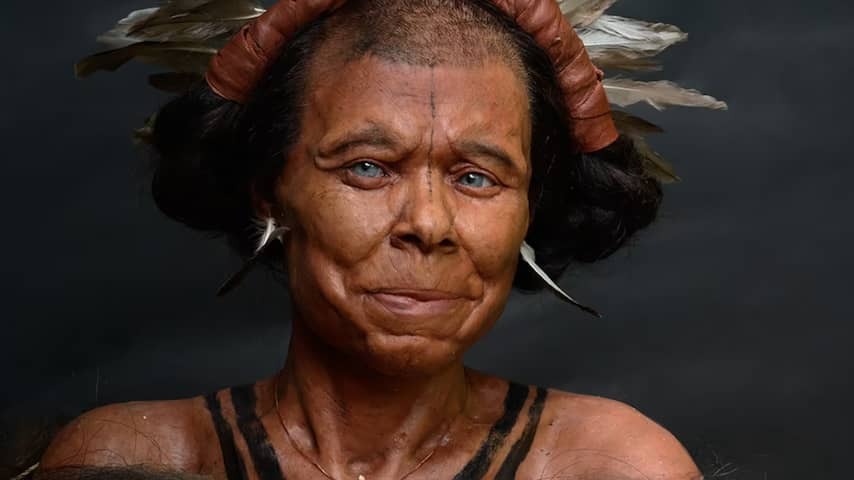
Researchers have used DNA to reconstruct the face of a woman who lived 10.5 thousand years ago in what is now Belgium. Notably, the woman had a lighter skin color than others from her time.
The woman had blue eyes, a high nasal bridge, and large brow ridges, according to the researchers from Ghent University. Based on the skull, the researchers were able to determine that she was between 35 and 60 years old when she died.
Her external characteristics were determined using found DNA. Her tattoos and jewelry are based on archaeological data from other excavations.
It is striking that the woman would have had a lighter skin color than other people from the same era, the Mesolithic. That period is also called the Stone Age and lasted in Europe from about 10,000 BC to 5,300 BC.
It was previously assumed that European hunters and gatherers had the same genetic characteristics. One of the archaeologists who contributed to the research, Philippe Crombé, therefore calls it a “surprise” that this woman would have had a lighter skin color.
According to the researchers, it shows that people then already had different skin colors within population groups. “Actually, that makes sense, since they lived spread over a large part of Western Europe,” says Crombé to CNN. “We see that now too.”
Signs of burial rituals found
The woman’s skull was found during an excavation in 1988 and 1989 in the Margaux cave in Dinant, in the Belgian Ardennes. The remains of eight other women were also found there. That is unusual, because most burial sites from the Stone Age contained the remains of men, women and children together.
The researchers suspect that the hunters and gatherers engaged in burial rituals. For example, many skeletons were sprinkled with ocher, a mixture of iron oxide and clay or sand. Furthermore, the remains were carefully covered with pieces of stone. And one of the skulls had damage from a type of knife, which would have been inflicted after her death.
It is also striking that the cave where the women were buried would have been in use for hundreds of years. “It was a memorial site where people regularly returned, despite the fact that hunters and gatherers moved a lot,” says archaeologist Isabelle De Groote.
Also a reconstruction of what her life looked like
With the help of finds from other excavations near the Meuse River, the researchers were able to determine how the woman lived. Among other things, stone tools, fish remains and bones of wild animals indicate that they lived as nomads and therefore often moved to look for new food. A reconstruction of what that looked like can be seen in the photo below.
